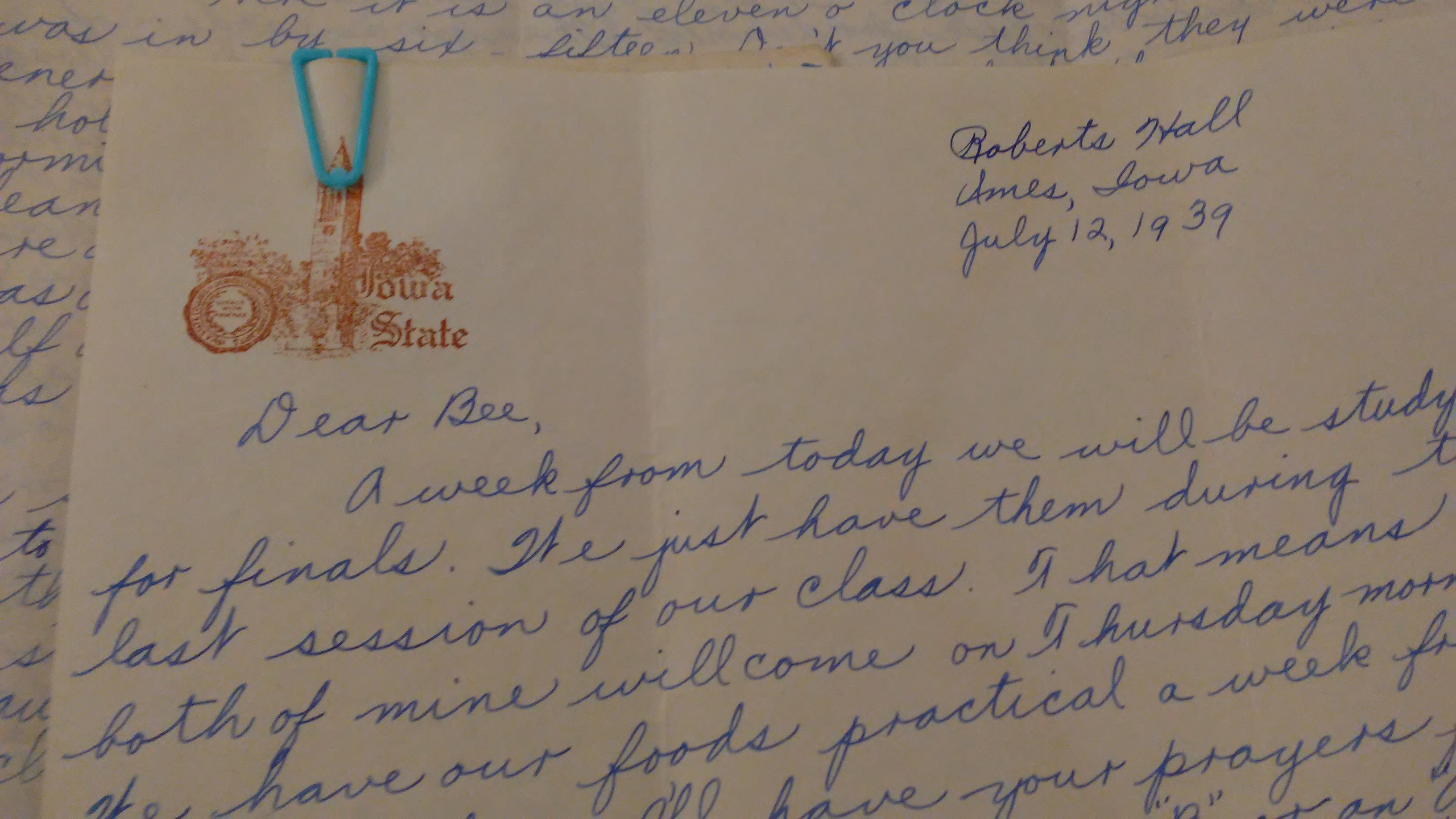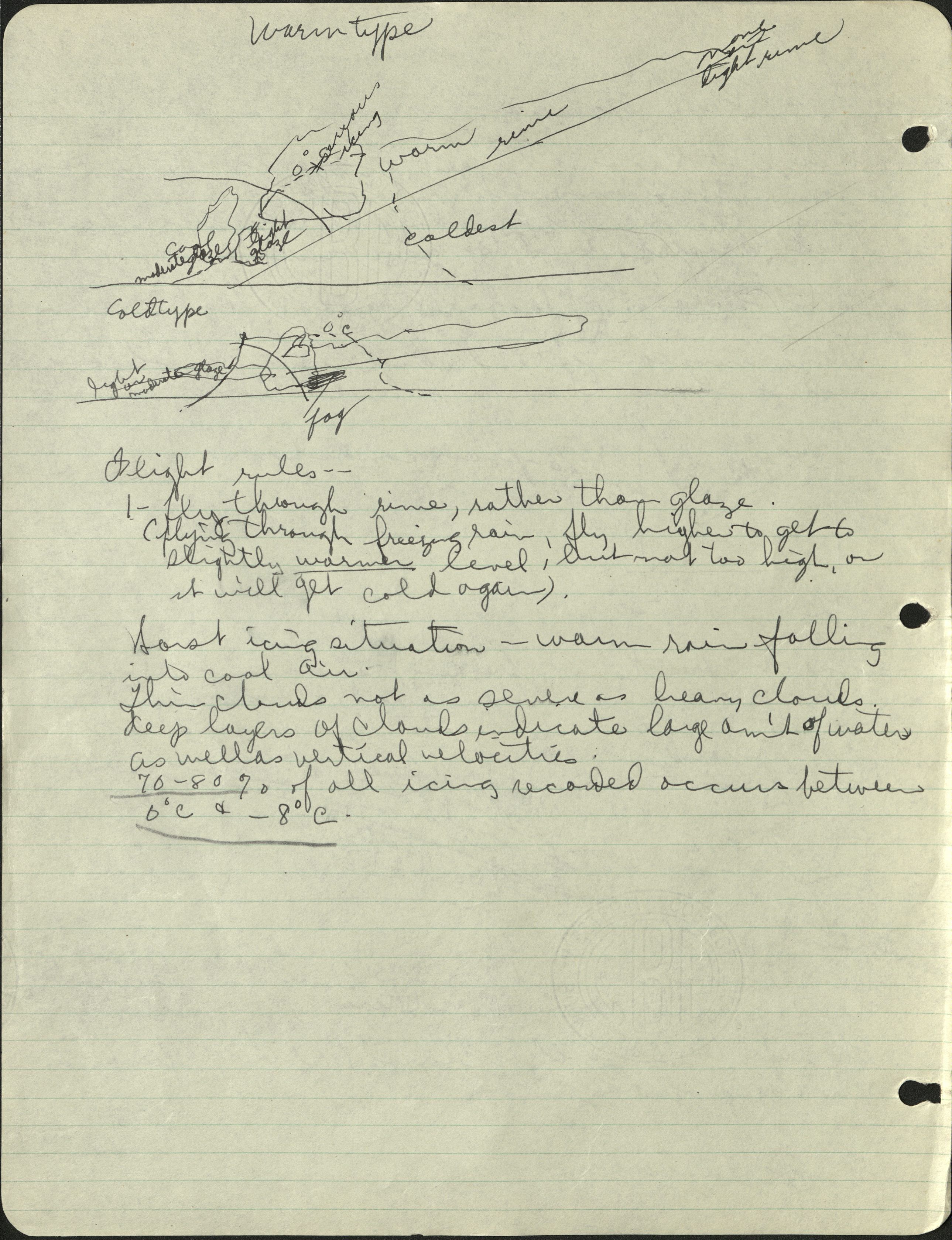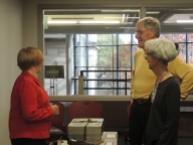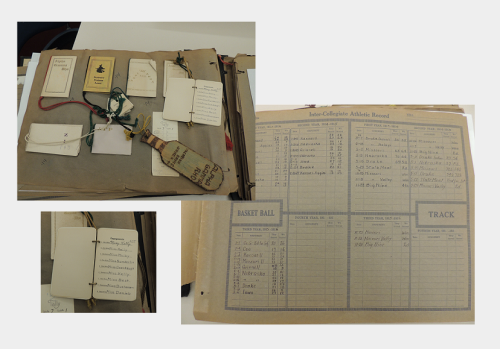The June 2021 intelligence report to Congress on UFO sightings (now referred to as “unidentified aerial phenomenon” or UAPs) has revived interest in a topic that, since the 1960s, had been relegated almost exclusively to the realm of science fiction and presumed delusion. And this revival has raised questions. If such sightings have indeed been so common, and so well documented by sources as reliable as the US military, and the technology they display does indeed pose a security threat, particularly given UAPs’ unknown origins (are they spyware from China or Russia? are they truly visitors from another world? who knows?), then what has prevented us, as a nation, from studying or discussing them in any serious manner for so long?
Interestingly, two ISU alumni from the 1950s might have been able to answer some of these questions. Both were involved in shaping the conversations that we have (and haven’t) been having about UFOs/UAPs for the past half-a-century.

Both Roy Craig and James Edward McDonald received their undergraduate degrees elsewhere (and McDonald served as a lieutenant in the navy during World War II) before completing their PhDs, within a year of each other, at Iowa State. They would likely not have crossed paths at ISU, however, as they studied with different departments. Craig, class of 1952, completed a PhD in Physical Chemistry (see his dissertation in the ISU Digital Repository here), while McDonald, class of 1951, completed his PhD in Physics (see his dissertation in the ISU Digital Repository here).
![A mixture of typed information fields and hand-written answers cover the entirety of the form. They read as follows:
Personnel File
Information Services
Morrill Hall
Iowa State College
Date: 6/26/51
Name: McDonald, James Edward
Position on Staff (Title): Research Assistant Professor
Place of Birth: Duluth, Minn.
Date of Birth: May 7, 1920
Education (degrees, dates and places conferred):
B.A. 1944 University of Omaha
M.S. 1945 Massachusetts Institute of Technology
PhD. 1951 Iowa State College
Date of appointment to Iowa State College staff: Jan. 1946
Date of appointment to present position: Jan 1950
Previous positions on Iowa State College Staff, and approximate dates of each: Instructor 1946-1949. Asst. Proff. 1950.
Positions held prior to Iowa State appointment, and approximate dates of each: U.S. Navy 1942-1945.
Leaves granted to serve other institutions, government projects, foreign missions, or like. (approximate dates): None.
If research worker, your field of specialization: Meteorology (micro-meteorology, cloud physics)
Outstanding accomplishments or results of your research work: -
Membership in honorary or professional groups, offices held: Sigma [illegible], American Meteorological Society, American Geophysical Union.
Membership in other national organizations, offices held: United World Federalists, Am. Civil Liberties Union, Am. Veterans Committee
(Over)](https://isuspecialcollections.files.wordpress.com/2021/08/mcdonald-physics-file_0003.jpg?w=623)

Our collections do not contain extensive documentation of either scientist’s time at Iowa State, but we do have a letter/memo providing notice of McDonald’s resignation, when he moved on to a more prestigious appointment at the University of Arizona in 1954, along with a typed draft of a research paper he wrote.
It is unclear exactly what career path Roy Craig took immediately following graduation. However, he was shortly thereafter recruited to the famous government Colorado Project, also known as “The Condon Committee”, by Edward Condon himself to serve as chief field investigator of UFO sightings and reports, which had already been pouring in from numerous sources for decades. The Colorado Project, founded in 1966, constituted the final stage of Project Blue Book , a study created by the United States Air Force in 1947 (perhaps not coincidentally the same year as the mysterious and much-mythologized “Roswell Incident” had occurred) and which had sought, not only to investigate the validity and/or cause of UFO sightings themselves, but to assess any potential national security threat posed by these incidents.
Craig, while reportedly fascinated by the concept of UFOs and their potential to open the public imagination, maintained a firmly skeptical position on their extraterrestrial origins throughout his time with the project. Indeed, his influence at the helm of this committee may have been among the factors that closed the project so quickly. In 1969, he and his fellow investigators released the Condon Report, concluding that there was nothing to be gained from further study on this topic, which led the Air Force to close the project on December 17th of that same year.
ISU’s SCUA unfortunately does not hold any of Craig’s professional papers from his time spent researching UFOs, but Texas A&M University does, and the finding aid for this collection can be found here. Craig also authored a book about his experience working with The Colorado Project in 1995, entitled UFOs: An Insider’s View of the Official Quest for Evidence. It is still in print, and copies can be accessed through Parks Library General Collection TL79 .C86 1995 (see the catalog entry and online version access here).

What Craig and several of his colleagues seemed to view as an open-and-shut case, however, was, in fact, hotly contested amongst the scientific community of his day even before the Condon Report officially dismissed the concept of UFOs’ extraterrestrial origin. And none other than fellow Iowa State alum James. E. McDonald, then a physicist at the University of Arizona, made a name for himself in the public eye by criticizing the Condon Committee’s methods and findings.
According to the July 26, 1968 issue of Science magazine (Vol. 161, No. 3839, pp. 339-342, article accessible via JSTOR at the following link), McDonald was, at that time, also a full-time UFO investigator and had, in conjunction with Air Force chief UFO consultant J. Allen Hynek, expressed concern directly to the National Academy of Sciences in April 1967 about (unspecified)evidence that the Colorado project had and had not taken into account. While the Science article quotes Edward Condon as claiming that “McDonald doesn’t know a damn thing about what we’ve done,” two of Condon’s own Colorado project team members, David R. Saunders and Norman E. Levine, seem to have sided with McDonald’s criticisms and were fired shortly after the National Investigations Committee on Aerial Phenomena (NICAP) caught wind of the objections McDonald and Hynek had raised.
A follow up article in Science’s January 17, 1969 issue (Vol. 163, No. 3864, pp. 260-262, JSTOR access available here), which was written after the release of the Condon Report, suggests that Saunders, at least, continued actively publishing criticism of the project even after he was fired from it. His 1968 book UFOs? Yes! Where the Condon Committee Went Wrong is also still available, and its entry in WorldCat indicates that UI, UNI, and Drake all hold copies in their general collections that ISU students could request through interlibrary loan, if interested.
Even more curiously, though, James E. McDonald was found dead in the middle of the desert, north of Tucson, Arizona, in June of 1971, less than two years after the Condon Report had been released and the Colorado project had been closed. The local press coverage of his death (of which we have a photocopy in McDonald’s alumni files, see image below) states that authorities named the cause as “apparent suicide,” which conclusion, at least in my mind, raises more questions than it answers. If nothing else, possibilities for cinematic plotlines abound.
Roy Craig, on the other hand, did not pass away until 2004, when he lost a battle with cancer. You can read the online version of the Iowa State Daily article here, or see the first page of a print-out version imaged below.
As is frequently the case with fascinating historical mysteries, we may never know the full truth of what the Condon Committee did or did not discover, or did or did not obscure. But we do know that the voices and perspectives of these two Iowa State alumni played a critical role in shaping, not only the current mythology of UFOs, alien contact, and secret government conspiracies in the public’s imagination, but also two sides of an ongoing conversation about what is and is not worth the application of scientific study, military resources, and the attention of everyday citizens so barraged with information (and so frequently lacking information literacy) that we already scarcely know who or what to believe, or why.



![Pencil markings at the top of the page read, "April, 1959. File of J. E. McDonald."
Text, presumably typed on a typewriter, below this reads as follows:
McDonald - Physics
Research on shape of raindrops
Is a raindrop streamlined?
The answer to this rather curious question would be in the affirmative if one could accept the conventional notion of a raindrop as being nicely rounded on its lower surface and tapering to a sharp upper point. However, this common conception of the shape of raindrops is quite incorrect, as it has been proved by taking photographs of freely falling drops using very high illumination and exceedingly short exposure times. Such photographs have revealed that large raindrops have a quite nonstreamlined form, flattened on the bottom and smoothly rounded, not pointed, above. No aerodynamicist would ever design such a shape if he wanted to cut down air resistance.
To understand why drops become so oddly deformed is of considerable interest in connection with he process of rain formation, both natural and artificial, and is also closely related to some problems in thunderstorm electricity; but the exact reason why big raindrops assume their characteristic shape has been a puzzle for some time. Dr. J. E. McDonald, a member of the Department of Physics of Iowa State College, has been studying this and certain other problems in cloud physics during the past year with the support of the Office of Naval Research. He has found that each individual raindrop that falls during a shower is the seat of some surprisingly complex physical processes.
First of all, the phenomenon of surface tension, which makes a liquid surface behave rather like an elastic membrane, would tend to pull a raindrop into a perfectly spherical shape if no other forces acted on the drop. In the case of a very tiny drizzle . . . [here the text on the first page cuts off]](https://isuspecialcollections.files.wordpress.com/2021/08/mcdonald-physics-file_0002.jpg?w=788)
![Photocopy of an article from a newspaper called the Tuscan Daily Citizen, Tucson, Arizona, Monday, June 14, 1971. The headline is "UA Physicist Found Dead in Desert." The text of the article reads as follows.
James E. Mcdonald, 51, a scientific voice in the wilderness on controversial issues ranging from UFO to SST, was found dead in a desert area north of Tucson yesterday.
[handwritten in red pen, someone has added the date June 13, 1971].
McDonald, of 3461 E. 3rd St., was a senior physicist specializing in clouds at the University of Arizona's Institute of Atmosphereic Physics.
His death was apparently a suicide, according to sheriff's deputies. An autopsy was performed, but no report was immediately availab.e
Sheriff Waldon V. Burr said a note and a .38 revolver were found beside the body. There was a bullet wound in the head.
Frank Flores, of 127 E. Lee St., told investigators that he and his children were hiking about noon yesterday when they found the body at Caonyon del Oro near Ina Road on Interstate 10.
McDonald reportedly left the Veterans Administration Hospital on South 6th Avenue, where he was being treated for visual problems, yesterday morning by taxi.
McDonald was blinded when he shot himself in the head on April 9, according to police reports, but only last week he began going to his office several hours a day.
Mcdonald came to the UA in 1954 after serving as a research physicist at the University of Chicago. His doctorate was from Iowa State.
UA President Richard A. Harvill said that McDonald was an "exceptionally able teacher" and "well-known throughout the United States as a brilliant scholar."
[there is inserted a headshot of Mcdonald captioned with his name].
Louis J. Battan, associate director of Institute of Atmospheric Physics, said that during the past 10 years McDonald made many important contributions to the advancement of cloud physics and weather modification research.
A member of the National Academy of Sciences, McDonald jumped into the national spotlight with his stand on unidentified flying objects (UFOs).
McDonald was bluntly outspoken in his opposition to the Air Forces' so-called "Condon Report," in which most UFO sightings were linked to satellites, balloons, clouds, birds and other explainable objects. The report was named for Dr. Edward U. Condon, who conducted the study for the Air Force.
After the Condon Report was issued in 1969, McDonald embarked on a speaking crusade against it.
He said the Condon Report was not a high-caliber scientific study.
McDonald's criticism of the report and the Air Force explanations of the UFOs was based on several years' study in which he concluded that UFOs were real -- and probably extraterrestrial -- surveillance craft.
Nor di McDonald confine his dissent to UFOs.
He was active most recently against the SST, branding the project "socially insane." He suggested that chemical reactions to exhausts from a fleet of SSTs could cause 10,000 new cases of skin cancer a year.
In the early 1960s, McDonald accused the Air Force of making mistakes in the location of Titan intercontinental missile sites around Tuscon.
McDonald and the committee he formed among Tusconians reasoned that the missile sites would become prime targets, and prevailing winds from west to west could expose thousands to nuclear fallout.
The group suggested that the titan sites all be placed to the east of Tucson.
Like so many of McDonald's battles, he lost. The Air Force stuck to its original plan and Tucson was ringed with 18 Titan missile sites.
Happily, in the decade since, McDonald's theory on nuclear fallout has never been tested.](https://isuspecialcollections.files.wordpress.com/2021/08/mcdonald-alumnus-file_0001.jpg?w=791)

















































